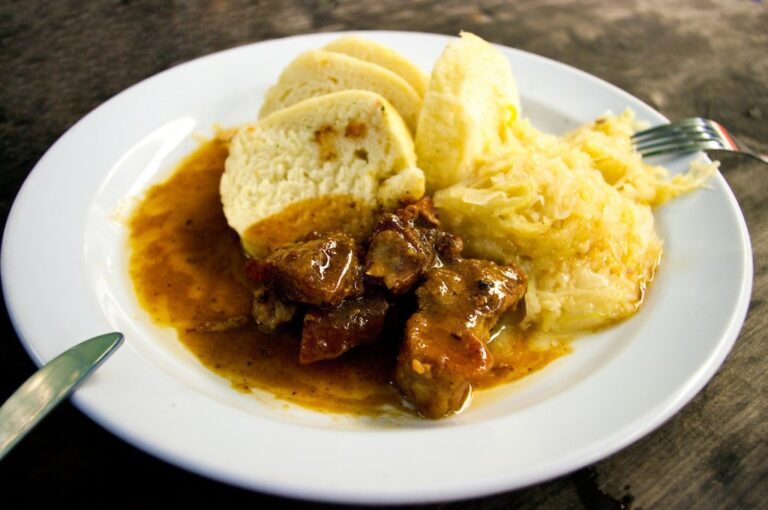Czech Culture: Let’s See What’s Cooking

Since the Velvet Revolution occurred in 1989 and the Czechoslovak borders were open to other countries, the food culture in Prague has been growing, slowly but surely. Within the last ten years, there has been an influx of cuisines of diverse styles from different nations worldwide, most notably Vietnamese, Italian, Mexican, American, and even vegetarian. It’s pretty well known that traditional Czech meals consist of meat, bread and beer, but where did this hearty fare originate from? Let’s take a look.
Historically, neighboring countries, such as Austria, Germany, and Hungary have made an impact on Czech cooking. In fact, in most any Czech restaurant you can find goulash (gulaš) or schnitzel (řizek), with a side of boiled potatoes or dumplings (knedlíky). Interestingly, contemporary Czech cuisine actually is more meat-filled than it had been in the past, since the Czech Republic has had an increase of animals able to be farmed over the decades.
The earliest Czech cookbook dates back to the 16th century by a printer named Severin. The 17th century brought on major class divides in the Czech Republic, separating the haves and have not’s. This in turn affected the various diets of the underprivileged, who would usually eat meals made of vegetables, leaving meat only for special occasions. On the opposite end, the wealthy ate lavish meals, consisting of pheasant, venison, turtles, or fish, the nobles of the time also introduced to the Czech fare pâté from duck and truffles to the cuisine which can be seen on most Czech menus even today. Slightly later, Czech’s introduced desserts and sweet dishes, such as chocolates, sweet buns, and cakes.
The most notable Czech food today is the ever-popular dumpling. Often made from potatoes at that time, they were introduced as a way of absorbing the gravy so popular in Czech cuisine. It is interesting to note, however, that the dumplings we find in Prague pubs today did not originate in the Czech Republic, but stem from Tyrolean shepherds.
Magdalena Dobromila Rettigová is famous for her cookbook, published in 1826, entitled, A Household Cookery Book or A Treatise on Meat and Fasting Dishes for Bohemian and Moravian Lasses. This book was hugely popular and was printed for over a hundred years.
Luckily these days, we are not confined to eating the same type of meal each day. And though, Prague has welcomed different types of foods and flavors to its repertoire, it would be a shame to miss out on traditional Czech cuisine. If you’re looking for a local pub, LOKAL and U Medvídků have a great traditional kitchen. LOKAL also has Pilsner Urquell in the tank and U Medvídků brews their own variety of beers. Kolkovna Olympia offers a sit-down vibe, with hefty portions of goose leg or pork neck. Though, no matter where you’re standing in Prague, a restaurant with a Czech kitchen is likely to be around the corner.
Thinking of having your first taste of Czech cooking? Why not try the pork knee next time you’re dining out with friends?
Want to study in Prague? Find out more about our Study Abroad program.
Related Articles
UNYP Chronicle Newsletter
The e-mail address you provide will be used only to send you the newsletter. Your privacy is important to us.
For more information download our UNYP Brochure.

Contacts
University of New York in Prague
Londýnská 41, 120 00 Praha
ID no: 25676598
Phone:
+420 224 221 261
![]() Skype
Skype
Email: unyp@unyp.cz







